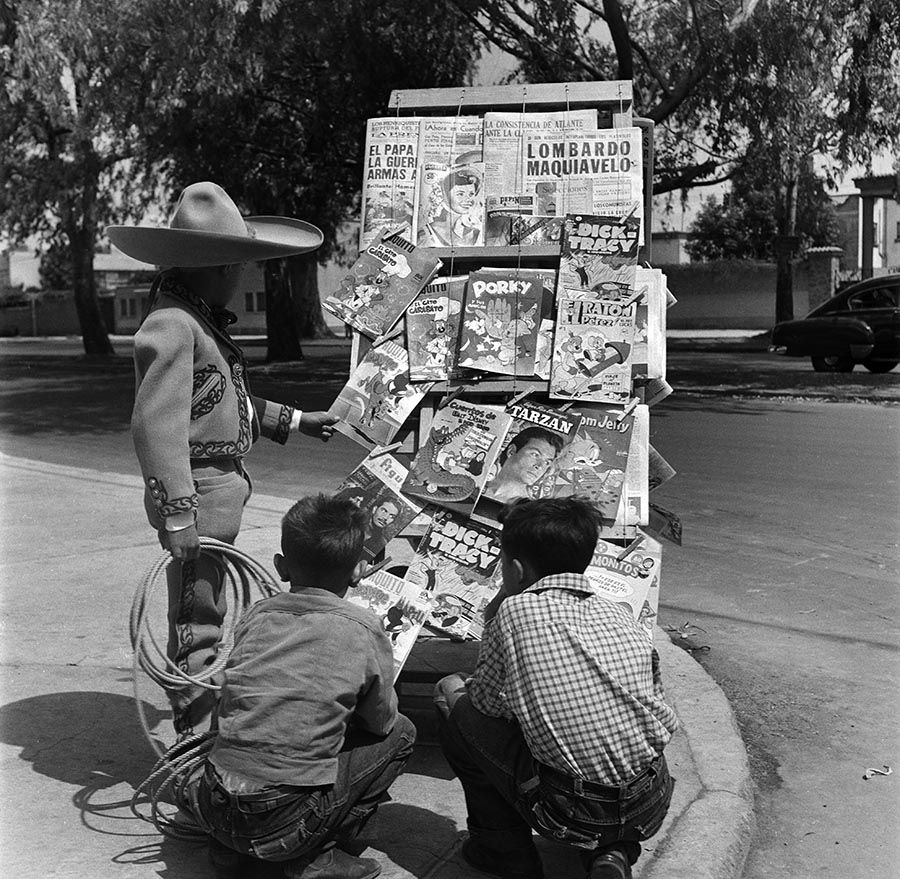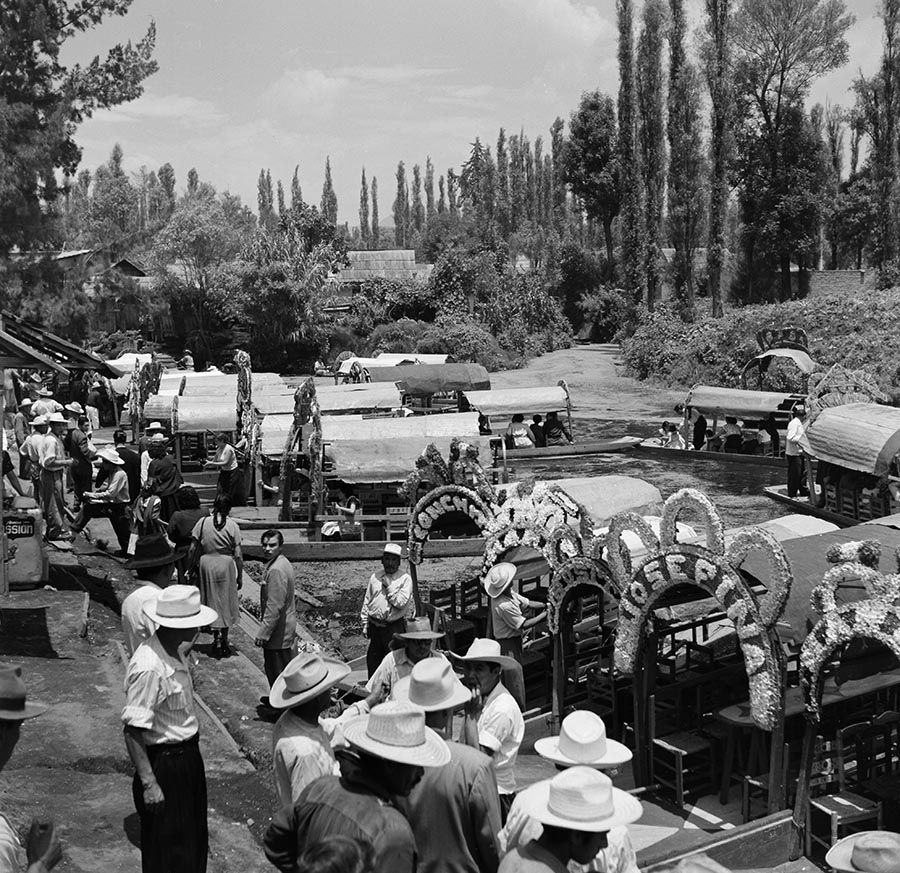City Diaries: Mexico City
Learn more about the Mexico City digital photographs in this month's Exposure collection.

This journey takes us to Mexico City, the city that embraces its contrasts. From the stunning architecture of the Palacio de Bellas Artes to its colorful canals, the entire city pulses with a blend of old-world charm and urban dynamism.
Each of the four photographs below, taken from the City Diaries Collection, celebrates the everyday moments that define this city’s vibrant cultural tapestry.r.
Three Lions: Independence Memorial (1950)
The Monument of Benito Juarez, located in Mexico City, was built to honor the legacy of one of Mexico's most iconic figures, President Benito Juarez. President Juarez is widely regarded as one of the country's greatest leaders. The monument has survived multiple political upheavals throughout the country's history and serves as a powerful symbol of Mexico's enduring quest for freedom, equality, and justice.

Pictured: The Monument of Benito Juarez was unveiled in 1910 – just in time to celebrate the centennial anniversary of Mexico's independence. The monument was designed by the renowned Mexican architect, Enrique Aragón, and features a commanding central statue of Juarez seated atop a grand pedestal, with the words "For the Meritorious Benito Juarez, the Homeland" inscribed on the central pillar. The statue is surrounded by intricate architectural elements, including elegant columns, ornate reliefs, and symbolic motifs that embody Juarez's legacy and ideals.
Earl Leaf: The Palacio de Bellas Artes (1952)
Mexico City has long served as a vibrant canvas, inspiring artists to push boundaries and re-invent themselves. In the 1950s, the city was in the thrall of the Mexican Muralism movement led by artists like Diego Rivera and David Alfaro Siqueiros, as well the Rupture Generation, a group of artists who broke away from traditional styles and explored abstract, surreal, and expressionistic art forms. At the heart of all this stood the Palacio de Bellas Artes, which served as a nexus for all these artistic energies.

Pictured: The Palacio de Bellas Artes,an architectural masterpiece blending Art Nouveau and Art Deco styles. In addition to providing a platform for established artists, this institution also served as a springboard for emerging talents, ranging from visual arts to music, dance, and theater. During this time the area surrounding the Palacio de Bellas Artes was a vibrant and lively district that pulsated with history, culture, and urban energy. Located in Mexico City’s historic center, it is surrounded by a mix of architectural styles, ranging from colonial-era buildings to modern skyscrapers.
Earl Leaf: Comic Books (1952)
During the 1950s, the close cultural ties between Mexico and the United States played a significant role in catalyzing Mexico City’s pop culture. The import of American comics influenced local comic book creators to develop new narratives and characters that incorporated elements of both Mexican folklore and American superhero archetypes. Additionally, the affordability and accessibility of comic books made them widely available, capturing the attention of a diverse audience.

Pictured: Comic book stands were a common sight in mid-century Mexico City, dotting the city’s bustling markets and busy street corners. Here, readers could find rows of colorful and enticing comic books, both imported from the United States and locally produced. The emergence of comics as a distinct form of art and entertainment was in part a reflection of the country's growing interest in American pop culture. On top of that, many of these illustrated stories were influenced by Mexico’s post-revolutionary period, which was characterized by a strong desire for cultural identity and national pride.
Earl Leaf: Bright Boat Along the Canals (1952)
The mid-late 20th century marked a thrilling era for Mexico's tourism industry, as adventurers from around the world flocked to experience the country's captivating wonders. More often than not, Mexico City served as these travelers’ first and last stop. And the city was a destination unto itself, with every corridor filled with flavor, color, and charm.

Pictured: During the 1950’s, Mexico City’s canals were filled with colorful boats that catered to visitors and locals alike. These brightly painted boats, known as trajineras, were modeled after the traditional boats the Aztecs used to navigate the city's ancient network of canals. Adorned with vibrant floral motifs and carrying musicians who serenaded passengers, these trajineras were not only an efficient means of transport, but a reflection of the city’s historic legacy and creative flair. Families, couples, and groups of friends would revel in the atmosphere, relishing the opportunity to step away from the city’s hustle and bustle in favor of a tranquil canal ride.Each of these photographs is a timeless tribute to La Capital, where tradition and innovation collide.
Check out the drop page and Candy's marketplace — and claim your free to mint image if you haven’t done that yet!

